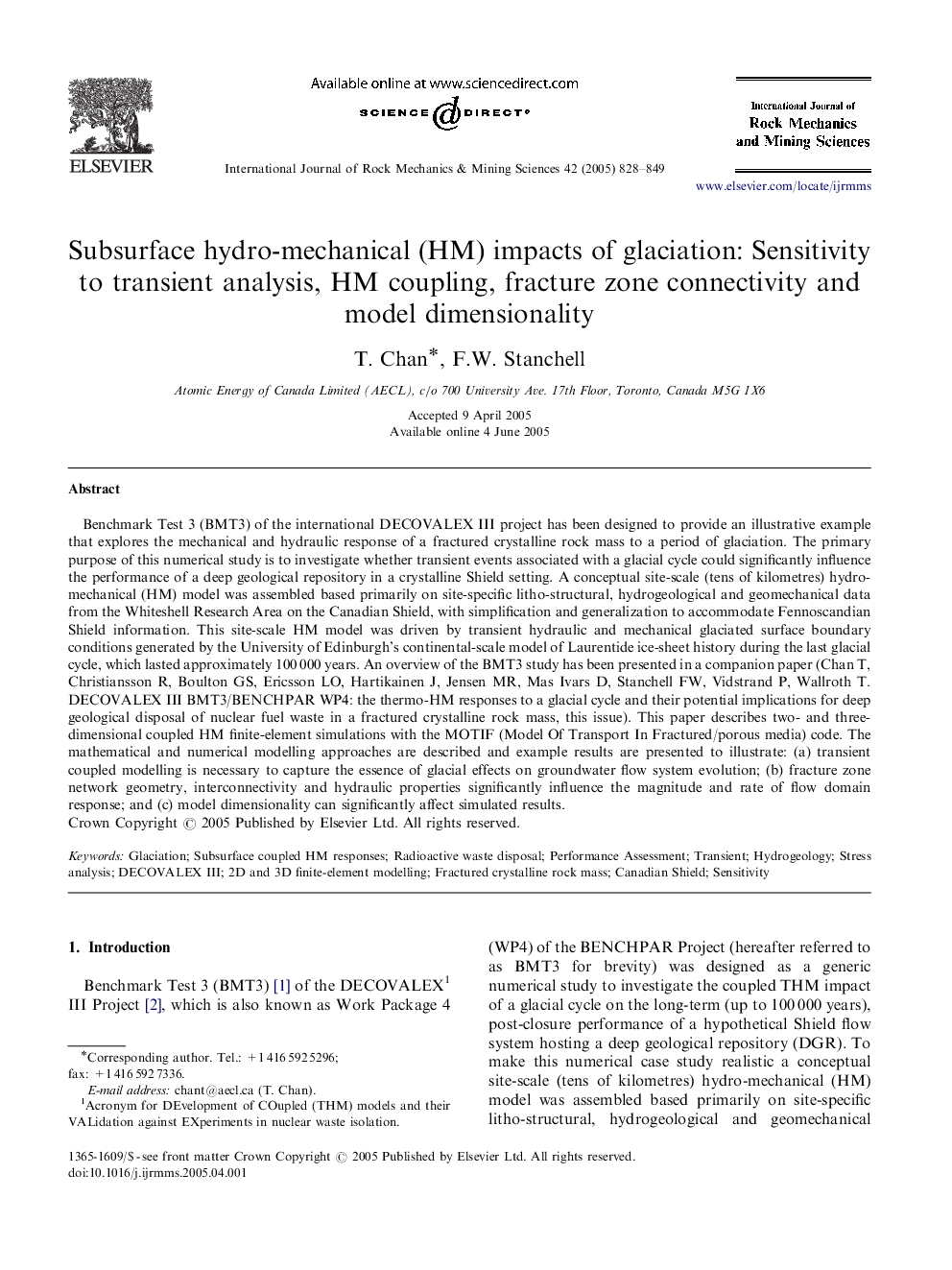| کد مقاله | کد نشریه | سال انتشار | مقاله انگلیسی | نسخه تمام متن |
|---|---|---|---|---|
| 9716471 | 1468770 | 2005 | 22 صفحه PDF | دانلود رایگان |
عنوان انگلیسی مقاله ISI
Subsurface hydro-mechanical (HM) impacts of glaciation: Sensitivity to transient analysis, HM coupling, fracture zone connectivity and model dimensionality
دانلود مقاله + سفارش ترجمه
دانلود مقاله ISI انگلیسی
رایگان برای ایرانیان
کلمات کلیدی
موضوعات مرتبط
مهندسی و علوم پایه
علوم زمین و سیارات
مهندسی ژئوتکنیک و زمین شناسی مهندسی
پیش نمایش صفحه اول مقاله

چکیده انگلیسی
Benchmark Test 3 (BMT3) of the international DECOVALEX III project has been designed to provide an illustrative example that explores the mechanical and hydraulic response of a fractured crystalline rock mass to a period of glaciation. The primary purpose of this numerical study is to investigate whether transient events associated with a glacial cycle could significantly influence the performance of a deep geological repository in a crystalline Shield setting. A conceptual site-scale (tens of kilometres) hydro-mechanical (HM) model was assembled based primarily on site-specific litho-structural, hydrogeological and geomechanical data from the Whiteshell Research Area on the Canadian Shield, with simplification and generalization to accommodate Fennoscandian Shield information. This site-scale HM model was driven by transient hydraulic and mechanical glaciated surface boundary conditions generated by the University of Edinburgh's continental-scale model of Laurentide ice-sheet history during the last glacial cycle, which lasted approximately 100Â 000 years. An overview of the BMT3 study has been presented in a companion paper (Chan T, Christiansson R, Boulton GS, Ericsson LO, Hartikainen J, Jensen MR, Mas Ivars D, Stanchell FW, Vidstrand P, Wallroth T. DECOVALEX III BMT3/BENCHPAR WP4: the thermo-HM responses to a glacial cycle and their potential implications for deep geological disposal of nuclear fuel waste in a fractured crystalline rock mass, this issue). This paper describes two- and three-dimensional coupled HM finite-element simulations with the MOTIF (Model Of Transport In Fractured/porous media) code. The mathematical and numerical modelling approaches are described and example results are presented to illustrate: (a) transient coupled modelling is necessary to capture the essence of glacial effects on groundwater flow system evolution; (b) fracture zone network geometry, interconnectivity and hydraulic properties significantly influence the magnitude and rate of flow domain response; and (c) model dimensionality can significantly affect simulated results.
ناشر
Database: Elsevier - ScienceDirect (ساینس دایرکت)
Journal: International Journal of Rock Mechanics and Mining Sciences - Volume 42, Issues 5â6, JulyâSeptember 2005, Pages 828-849
Journal: International Journal of Rock Mechanics and Mining Sciences - Volume 42, Issues 5â6, JulyâSeptember 2005, Pages 828-849
نویسندگان
T. Chan, F.W. Stanchell,